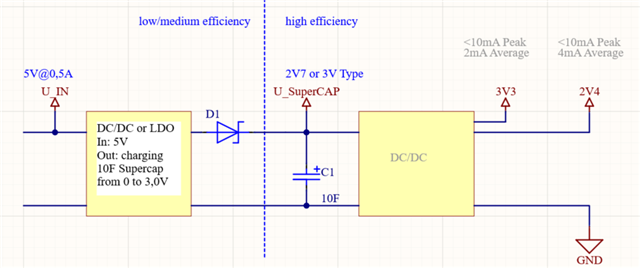Hi Team,
Our customer is looking a 3V supercapacitor charger from a 5V supply with 0.5A maximum current. Their loads will consume an average current of 2mA and 4mA and peak current of less than 10mA. One of the supercapacitor battery charger that we have stocks is BQ24130. Referring to Figure 2 of the datasheet, it appears that the device has no reverse current protection. Can we add a reverse current protection diode (D1) as shown in the figure below?

Regards,
Danilo

